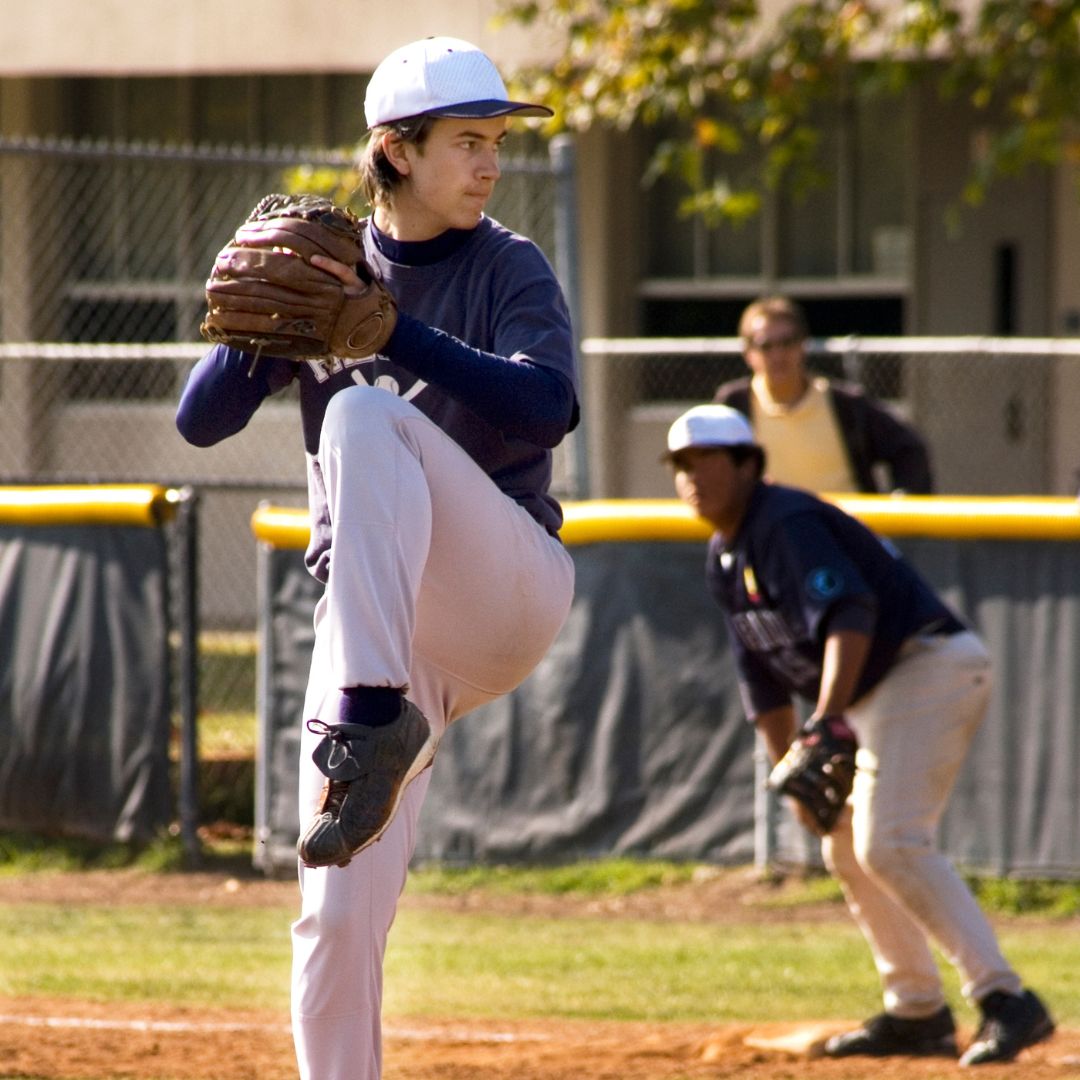*I want to start off this blog by explaining that we are not claiming to be orthopedic surgeons. Surgeons should be consulted if you feel surgery may be warranted. We trust their opinions and knowledge and their recommendation is likely on significant experience and expert research. This blog is to educate you on what the meniscus is, how it can be injured, how it affects daily functioning and our recommendation on whether surgery or conservative treatment may be a better option. Our opinion at Block Sports Chiropractic & Physical Therapy is based off of years of experience and research as well, but again, orthopedic surgeons are well respected in our community and we trust them and their decision process. It is also important to note that the research on the meniscus is very extensive and this blog touches on just the basics for the sake of time and space!
That being said, let’s get to the bottom of this meniscus!
Meniscus Anatomy and Function:
The meniscus is the structure found sitting between the end of the femur (femoral condyles) and the top of the tibia (tibial plateaus). There are two menisci on either side of the knee that actually work in different ways. The lateral (or outside) meniscus is larger and more circular than the medial (inside) meniscus, whereas the medial meniscus is more of a “c”-shape and is slightly smaller. Additionally, the lateral meniscus attaches to more of the anterior and posterior capsules of the knee than the medial meniscus. This allows the lateral meniscus to absorb greater shock, while also being a little more mobile than the medial. The lateral meniscus is slightly more resilient to tearing as well because of its anatomy.
Both function to help dissipate the force and absorb shock that goes through the knee during walking, running, bending, jumping, etc. They cushion and lubricate the joint to help prevent bone-on-bone contact and improve stability during the aforementioned activities. A healthy meniscus can provide up to 60% contact area while transmitting over 50% of the load through the knee. The contact surface does, however, change with knee flexion, especially in weight bearing and is different depending on which meniscus you talk about. For example, the lateral meniscus takes on greater load (due to its larger and more circular shape) as the knee bends further during weight bearing tasks (i.e. squatting).
The menisci do have vascular and nerve supply, however, vascularity is not ideal for great healing. Many researchers break the meniscus into zones. Below is an example of the zones according to Beaufils et al. (2017):

The outer zones tend to have a greater blood supply and have a better likelihood to heal conservatively. Those on the inside, don’t have as great of luck. That being said, conservative treatment for meniscus tears has been found to be very successful at Block Sports Chiropractic & Physical Therapy. It is important to know though, that every individual patient is very different.
Types of tears and repairs:
Meniscus repairs are considered one of the most common reasons for orthopedic arthroscopic surgery in the United States.
Traumatic meniscus tears are typically found in younger athletes (<40yrs old) and are often caused by trauma or twisting force during sporting injury. These meniscus tears are often classified as longitudinal, bucket handle and/or radial tears. Longitudinal tears are vertical tears that are typically found on the outside portions of the meniscus. Bucket handle tears refer to dislocated parts of the meniscus that flap down similar to that of a bucket-handle. Finally, radial tears are vertical tears that arise centrally. More often than not, a meniscus repair is often used to cure these injuries. The benefits of this is decreased risk to developing OA compared to other surgeries. However, the treatment and recovery is much longer and overall more expensive for payer and patient. It is important to note too, that the risk for failure or reinjury is relatively high with these tears.
Degenerative meniscus tears are actually very common in the general population and are often asymptomatic until an additional injury is had. It has been found in the research that nearly 60% of the middle-aged population would have a (+) tear on an MRI but no symptoms. These tears develop slowly and are most common in the middle-aged women. The general consensus is that it can be prevalent in nearly 16% of women between 50-59 and in over 50% of men aged 70-90. These meniscus tears are often classified as horizontal, flap and complex tears. Horizontal tears are of course tears that follow a horizontal pattern throughout the meniscus. Flap tears has been described as a more oblique vertical tear that looks like the beak of a parrot. Finally, a complex degenerative tear can be multiple tears in the weakened/arthritic menisci. Surgical intervention can be performed. The most common surgery is the arthroscopic meniscectomy, however, long term outcomes are controversial in the research. More often than not, the outcomes are good short-term but there is a high risk for osteoarthritis. This means that people have decrease pain for a little while after surgery, however, within a few years they have increased risk for further degeneration since you are removing that cushion and shock absorber in the knee.
The nature of this blog is not to go into detail all the specific types of tears that can be present in the meniscus. However, it is important to note that conservative treatment is just as successful as arthroscopic intervention in degenerative meniscus tears. Therefore, it would benefit you to try conservative treatment at Block Sports Chiropractic & Physical Therapy. Our outcomes are high when it comes to conservative treatment for degenerative meniscus tears.
That being said, we also have good success rates for post-operative rehabilitation if you and your surgeon decide surgery is the best option.
How can we help degenerative meniscus tears?:
*We will not discuss post-surgical meniscus repairs in the blog, but note that we are highly experienced in the rehabilitation of such sports-related injuries.
Conservative treatment has been found to be equally, if not more successful than surgical intervention when it comes to relieving symptoms of degenerative meniscus tears.
Here at Block Sports Chiropractic & Physical Therapy, we look at structures up and down the chain to determine what may have been the reason for your injury. Research has stated that nearly 50% of degenerative tears happen spontaneously. In our opinion, we feel this is due to poor mechanics during every day activities that cause repetitive stress to the meniscus until it can’t handle any more.
With further research and experience, we find hip weakness and ankle hypomobility (stiffness) are often highly correlated with knee injury, specifically meniscus damage and arthritis. During our evaluations, our physical therapists and chiropractors look at hip strength and mobility, as well as how much your ankle can move. If your hips are weak, your bending/squatting mechanics are often poor and lead to inefficient knee movements. In previous blogs, we discuss genu valgum (knees-in during squatting) as a result to hip weakness and ankle stiffness. With genu valgum comes increase stress on the medial compartment of the knee, leaving the already weaker medial meniscus susceptible to degeneration. Additionally, poor ratio of quadriceps and hamstring strength can also lead to poor knee tracking and stability during normal daily activities or exercise. If one is stronger than the other by too much, it leads to inefficient movement and sliding of the femur/tibial on one another – again leaving the knee at risk for degeneration. Finally, poor flexibility is also a risk factor for meniscus damage. With muscle imbalances, the patella (knee cap) is pulled at different lengths by different muscles and can lead to maltracking. With maltracking comes the poor gliding mechanics of the knee, which (not to stress too much but….) LEAVES THE KNEE AT RISK FOR INJURY!
Conclusion:
To summarize, there are several ways to tear your meniscus. Whether it be during a sport, trauma (i.e. MVA) or simply degeneration, Block Sports Chiropractic & Physical Therapy providers can help. We have years of experience in treating conservatively, pre-operatively and post-operatively. We typically recommend trying conservative treatment for most degenerative meniscus tears to try and prevent the progression of osteoarthritis in the knee. Though we know how to treat total knee replacements, we want to prevent them in all ways possible!




